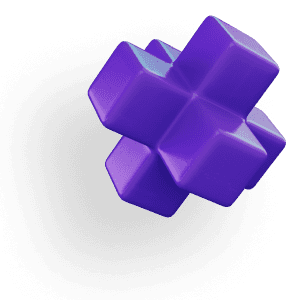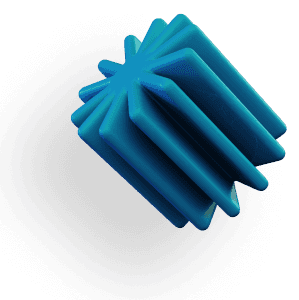HOW TO USE GPU
Blender (v.2.8 and newer)
Blender is a powerful tool for 3D modeling, animation, and rendering. With its Cycles Render Engine, enabling GPU acceleration using NVIDIA’s CUDA or OptiX can significantly improve rendering speed, particularly for ray tracing tasks. Here's how to configure GPU acceleration and optimize performance for faster, more efficient rendering.
How to Enable GPU-Accelerated Rendering and Denoising in Blender
Launch Blender
Open the application from the default path:C:\Program Files\Blender Foundation\Blender 2.##\Blender.exeConfigure Preferences for GPU Rendering

Go to Edit > Preferences.
In the System tab, select OptiX under Cycles Render Devices if you have an NVIDIA RTX GPU. For older NVIDIA GPUs, select CUDA, and for AMD GPUs, select OpenCL.
Set Render Engine to GPU Compute

Go to the Render Properties tab.
Set Render Engine to Cycles and choose GPU Compute under the Device option. This ensures that Blender uses your GPU for faster rendering.
Enable AI Denoising (OptiX)

For faster, noise-free renders, enable AI Denoising using the OptiX backend. This helps speed up interactive previews and final renders by using deep learning to reduce noise without increasing render time.
Top Tips to Speed Up Blender Performance
Update GPU Drivers
Always ensure that your NVIDIA or AMD drivers are up to date. This provides optimal compatibility and performance when using GPU-accelerated rendering in Blender.Optimize Tile Size
Adjusting tile size can have a huge impact on render times. For GPUs, larger tile sizes (between 256x256 and 512x512) generally work best. This setting can be found under Render > Performance in Blender’s properties.Use Simplify Settings
Enabling Simplify can reduce the number of subdivisions and particle counts during rendering, speeding up the process without compromising too much on quality. Go to Render Properties > Simplify to manage these settings.Manage Texture and Geometry
Lower the texture resolution for faster rendering by setting a Texture Limit under System Settings. This frees up VRAM, which is especially helpful for scenes with large textures or high-poly models. Also, optimize geometry by reducing unnecessary subdivisions or using instances instead of duplicates.Enable Fast GI Approximation
For faster global illumination (GI), turn on Fast GI Approximation under Render Settings > Light Paths. This approximation lowers the number of bounces calculated, reducing render time, especially in scenes with complex lighting.
Blender 3D System Requirements
Minimum Requirements:
Operating System:
Windows: Windows 10 (64-bit) version 22H2 or later.
macOS: macOS 10.15 (Catalina) or later.
Linux: 64-bit distribution with glibc 2.17 or later.
Processor: 64-bit dual-core 2 GHz CPU with SSE2 support.
RAM: 4 GB.
Graphics Card: Graphics card with 1 GB RAM, OpenGL 3.3 support.
Display Resolution: 1280×768.
Pointing Device: Mouse, trackpad, or pen+tablet.
Recommended Specifications:
Processor: 64-bit quad-core CPU.
RAM: 16 GB.
Graphics Card: Graphics card with 4 GB RAM.
Display Resolution: Full HD (1920×1080).
Pointing Device: Three-button mouse or pen+tablet.
Optimal Specifications:
Processor: 64-bit eight-core CPU.
RAM: 32 GB.
Graphics Card: Graphics card with 12 GB RAM.
Display Resolution: 2560×1440 or higher.
Pointing Device: Three-button mouse and pen+tablet.
Meeting these specifications will help you get the most out of Blender, ensuring efficient workflows and high-quality outputs. Keep in mind that more complex projects, especially those involving high-resolution textures or intricate simulations, will benefit from higher-end hardware configurations.
Top Recommended GPUs for Blender

NVIDIA RTX 4090
The RTX 4090 is currently the most powerful GPU for Blender, offering the highest CUDA core count and 24GB of VRAM, making it perfect for complex, high-resolution scenes with ray tracing and AI denoising.NVIDIA RTX 3080
The RTX 3080 provides a good balance between cost and performance, delivering excellent rendering speed for most professional workflows in Blender, including ray tracing and 4K outputs.AMD Radeon RX 6900 XT
If you prefer AMD, the RX 6900 XT is a powerful choice, offering competitive performance with NVIDIA’s 30-series GPUs. It uses OpenCL for GPU-accelerated rendering and performs well for both viewport and final renders.
By following these steps and tips, you’ll significantly improve Blender's performance, allowing for faster rendering times and smoother workflows in both interactive and final-frame rendering.
Enjoy Faster Renderings and Workflow with Vagon
When the goal is to cut down rendering times and speeding up your workflow, every second saved is a victory. But what if you could do more than just save a few seconds?
With Vagon’s cloud PCs powered by 48 cores, 4 x 24GB RTX-enabled NVIDIA GPUs and 192GB of RAM, work on your projects faster than ever. It’s easy to use, right in your browser. You can transfer your workspace and files in just a few clicks and try it yourself!






